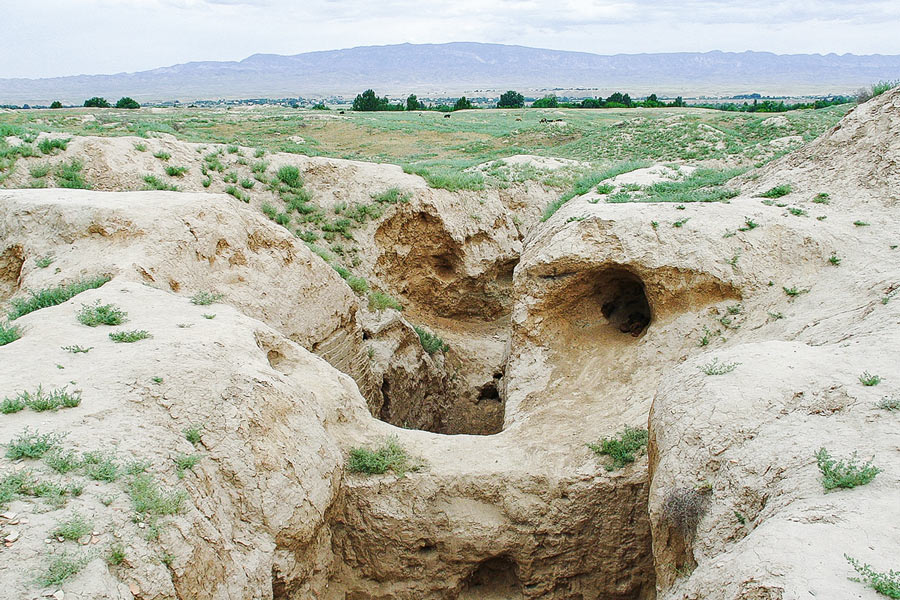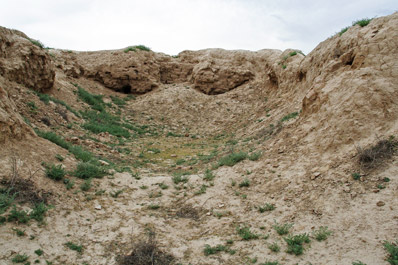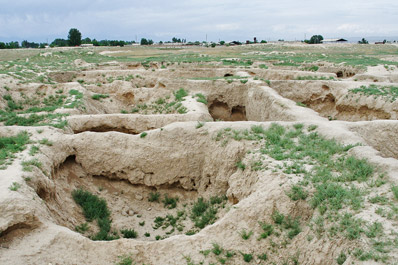Dalverzintepe settlement, vicinity of Termez

Dalverzintepe settlement, located 115 kilometres from the city of Termez, was one of the largest and best-fortified urban centers in ancient Bactria, a historical region in the south of modern Uzbekistan. Positioned along the Great Silk Road, it was home to merchants, craftsmen, and military personnel. Trade and handicrafts thrived here, while cultural and religious life was vibrant. Excavations have uncovered the remains of temples, frescoes, coins, and jewelry, reflecting a high level of social development and close connections with other regions of Asia. Dalverzintepe was a vital hub for the exchange of goods, knowledge, and traditions, securing its place in the history of the ancient East.
History
Dalverzintepe flourished when Bactria was a major centre of civilisation, thanks to its strategic position on the Great Silk Road. From the I to the III centuries, it was part of the vast Kushan Empire, whose most famous ruler, Kanishka I, strongly supported Buddhism and promoted the construction of temples and monasteries throughout his realm. In the III century, the region fell to the Sasanids, adherents of Zoroastrism, and in the VII-VIII centuries, the Arab Caliphate established control, spreading Islam and transforming the cultural landscape. These successive changes left their mark on architecture and traditions, creating a layered legacy still studied by historians and archaeologists today.
Structure of the settlement
Covering about 40 hectares, the settlement boasted an elaborate defensive system of massive walls, towers, and a moat. A citadel crowned the hilltop, with its entrance gates leading into the city, where residential quarters and public spaces were laid out. The urban plan clearly shows streets, squares, baths, houses, and other elements of civic infrastructure. Residential buildings ranged from the grand mansions of the elite to the modest homes of ordinary citizens.
The houses of wealthy residents often had two or three dozen rooms, including a formal reception hall, dining room, bedrooms, and spaces for religious ceremonies. These homes likely belonged to members of the aristocracy or military elite. Some owners may have participated in campaigns in north-western India, returning with exotic objects from those regions.
Ordinary dwellings were simpler but well-adapted to daily life and local climate. Finds from one such house show that pottery and weaving were important trades in Dalverzintepe. Homes typically separated living and working areas, with features such as a shaded front courtyard serving as a semi-open space for gatherings during warm seasons. Many also included a farmyard directly connected to the living quarters. While the wealthy had dedicated rooms for ritual practices, middle-class homes reserved only a corner for daily prayers.
In addition to housing, Dalverzintepe had workshops and religious sites, including a temple, a Buddhist sanctuary, and a naus - a burial structure located outside the settlement.
Finds
Dalverzintepe has yielded a remarkable range of artefacts illuminating the daily and spiritual life of the Kushan-Bactrians. The most notable discoveries come from the temple and Buddhist sanctuary, where statues and wall paintings depict deities, priests, nobles, and members of the ruling dynasty. One reconstructed fresco, measuring 1.5 by 2 metres, shows a goddess, a priest, a priestess, and four infants, likely illustrating a key ritual scene.
Equally fascinating are finds from residential contexts. In the house of a wealthy citizen, archaeologists discovered ivory figurines of an elephant and a zebu bull, pieces from chaturanga, an early form of chess. The celebrated “Dalverzin treasure” - 115 gold items weighing over 36 kilograms, including coins, pendants, necklaces, bracelets, and earrings - attests to the region’s sophisticated jewellery-making traditions during the Kushan period. Numerous ceramic fragments, from pots and jugs to plates and bowls, were also found in utility areas.
Dalverzintepe stands as a unique archaeological site showcasing the richness of Kushan-era culture. Its fortifications, residential quarters, and ritual buildings offer a vivid picture of ancient Bactria and underscore its role as a major centre along the Great Silk Road. Ongoing research continues to shed light on its past.



